Choosing the right aquarium plants for your fish tank is an art, but there’s also a science to it. Many beginners make the mistake of thinking only of the former—how great will this look in my brand-new fish tank!
If you don’t want to have the nasty surprise of seeing your beautiful aquarium plants turn a desolating brown within days, here are a few things you need to know.
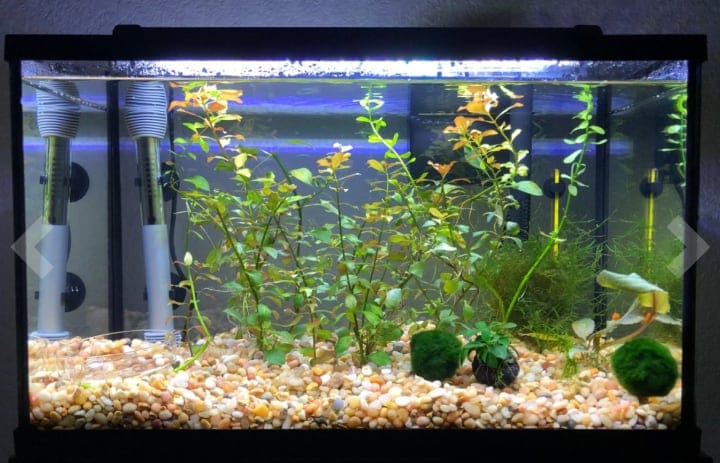
This guide will talk you through the main types of aquarium plants and explain how to care for them. Let’s get started!
Main Types of Aquarium Plants
When you look at an expertly decorated fish tank all you can see is the luscious vegetation giving the fish a natural habitat to explore. But to the discerning eye, there are three distinct categories of aquarium plants blending together.
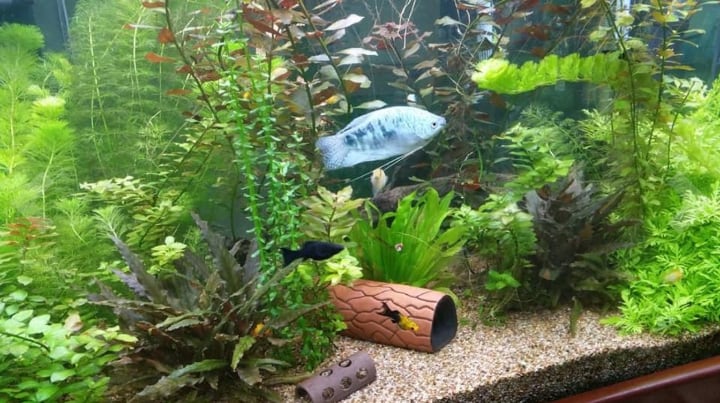
The three main categories aquarium plants fall into are foreground plants, mid-ground plants, and background plants. This is based primarily on how tall these plants grow.
As a rule, you don’t want tall grasses in the foreground, totally obscuring the view. The fish will probably enjoy some privacy, but your view of the tank will be ruined.
Fact: By the way, did you know that landscaping your fish tank is called aquascaping?
Aquarium Foreground Plants
If you want to set up the perfect aquarium, you need to have plants that grow slow and not very tall in the foreground.
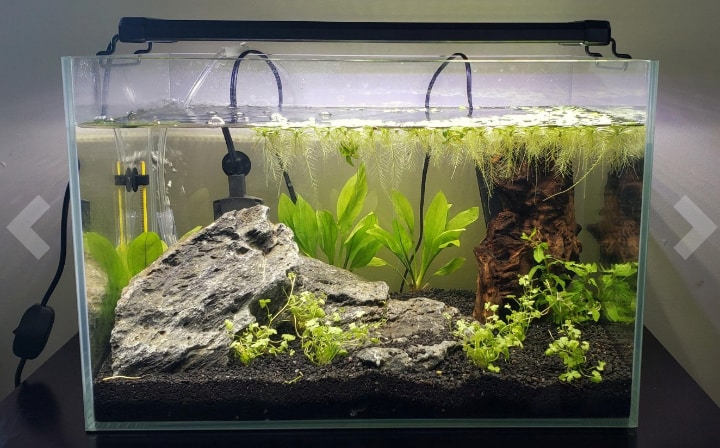
The best foreground plants are those that grow outward rather than upward creating a beautiful green carpet for your tank.
Dwarf Baby Tears
Also known as Hemianthus Callitrichoides, DBT is a popular carpeting plant as it grows fast and creates a bright green bottom layer for your tank. Thrives in slightly acidic water and requires a temperature between 70 and 84F.
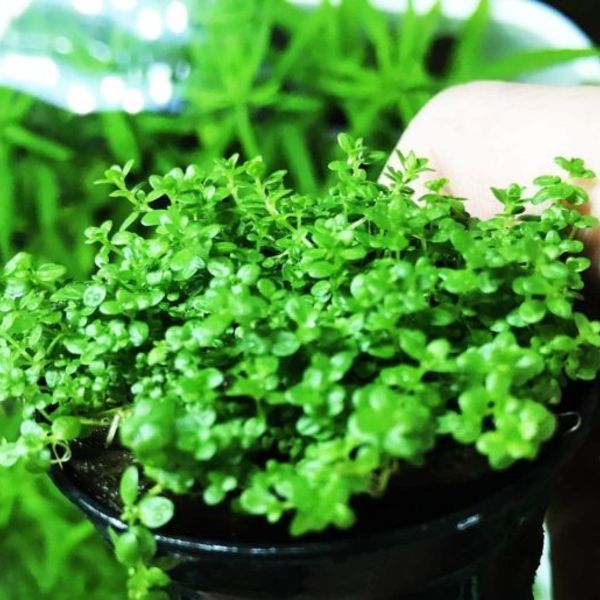
Make sure it has strong light, 2 watts per gallon of water. If it doesn’t get enough light, your lush emerald carpet will begin to rise towards the surface in search of it.
Java Moss
Java Moss is one of the best choices for beginners, as far as foreground aquarium plants go. It has a fast growth rate, which means it will grow into a nice green carpet quickly, especially if it gets plenty of light.
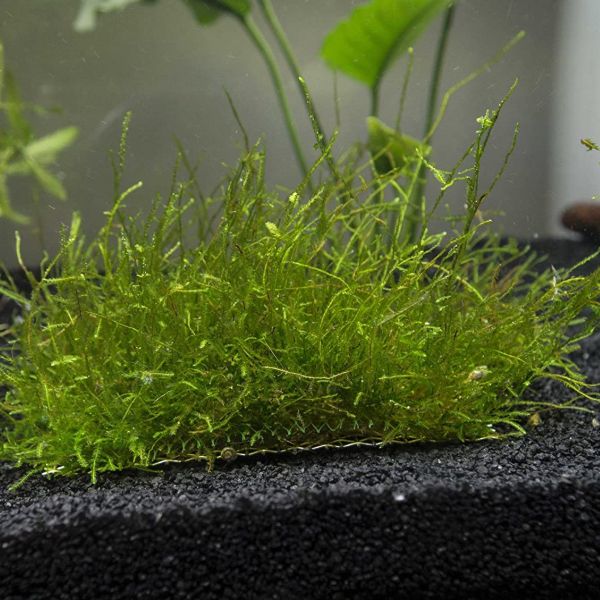
Java Moss is a low-maintenance plant but requires well-circulated water. Ideal water temperature is between 74-82F.
Brazilian Micro Swords
Lilaeopsis Brasiliensis, also known as Brazilian Micro Swords, grows alongside the river banks in South American countries, including Brazil, hence the name.
It’s a plant with a short stem, so it will grow to a maximum of 3 inches in height.
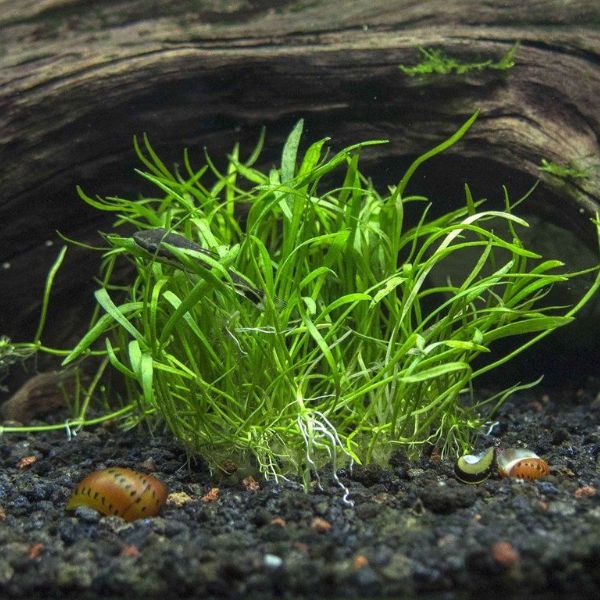
It’s widely used for carpeting and has a moderate growth rate. Brazilian Micro Swords prefer slightly alkaline water, but require strong direct lighting, at least 3 watts per gallon.
Tip: For faster growth, trim the roots before planting in the aquarium using sharp scissors.
Aquarium Midground Plants
Middle ground aquarium plants require careful choosing as they will form the focal point of your fish tank. Besides the colorful fish, it’s the cluster of plants sitting in the middle of the tank that draws the eye.
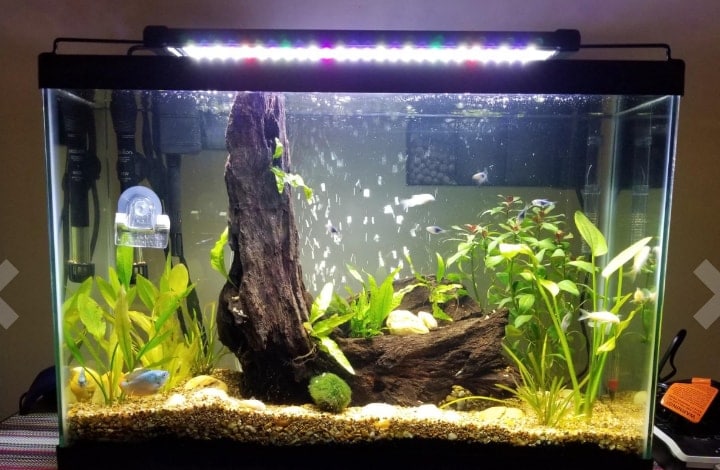
These plants need to be of moderate height, or else no one will be able to see the background. Here are a few of the most popular mid-ground aquarium plants.
Java Fern
Java fern is so easy to grow even beginners can manage to take care of it.
A native of the Indonesian island of Java, this plant grows in many shapes and sizes, but the most popular for use as aquarium plants are the trident and the needle varieties.
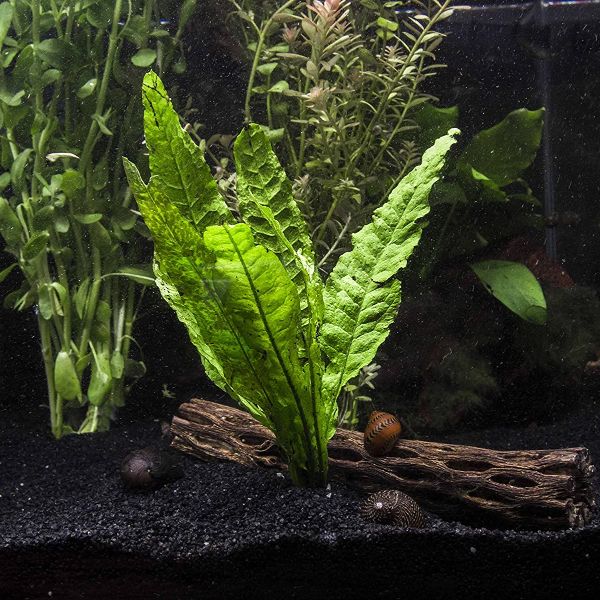
They grow up to 13 inches and only need low lighting. As far as the water conditions Java fern requires an environment with a pH between 6 and 8 and allows for variations of temperature between 68-82F.
Alternanthera Reineckii
Alternanthera Reineckii is one of the best aquarium plants to be used for aquascaping the middle part of the fish tank.
Its red leaves create an impressive contrast with the vivid green of the foreground. It has a slow growth rate and thrives in highly acidic water.
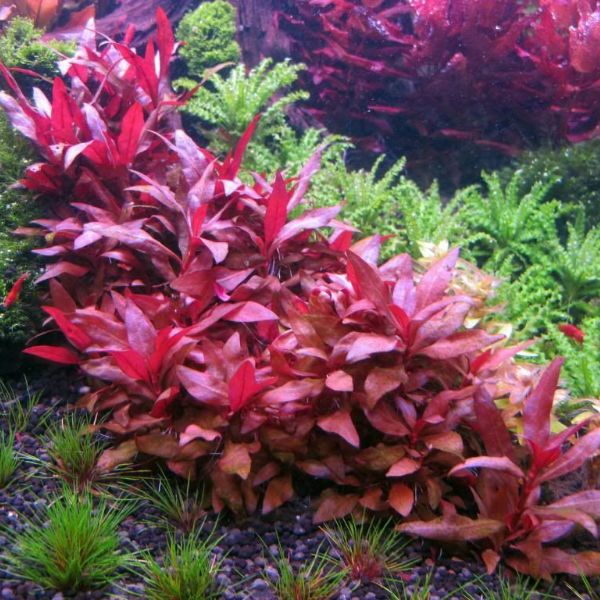
Tip: Prune it regularly to obtain new baby stems, but also to make sure it doesn’t grow bushy blocking the view of other plants.
Anubias Barteri Var. Nana
This little plant is very popular because it’s very low-maintenance and adapts well to different water conditions. If you have a more demanding plant in your tank, this is a good companion, as it won’t give you additional trouble.
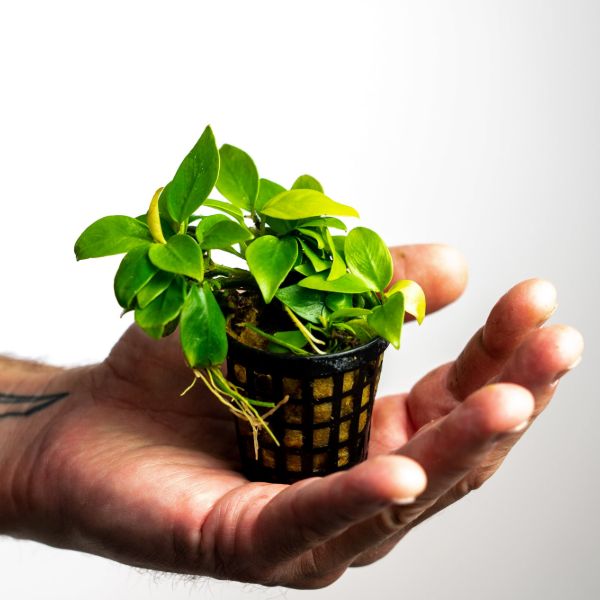
It has a slow growth rate, but its leaves will endure for years, not to mention that it flowers regularly. It can grow 4-6 inches tall and prefers a shaded place.
Aquarium Background Plants
This type of aquarium plants is used to create a background for your aquarium, and it can be used by fish as a playground for a game of hide-and-seek.
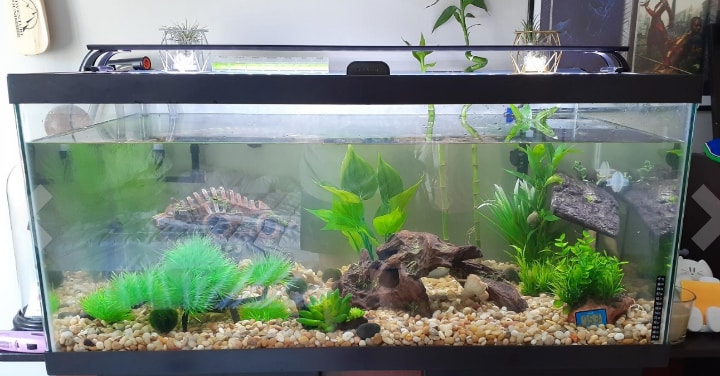
Background aquarium plants can be as tall as the walls of your tank if you want.
Water Wisteria
Also known as Hygrophila difformis, water wisteria is a sturdy low-maintenance plant, which makes it suitable even for beginners.
It can grow up to 20 inches in height and 10 inches in width, but this depends on the level of lighting it gets.
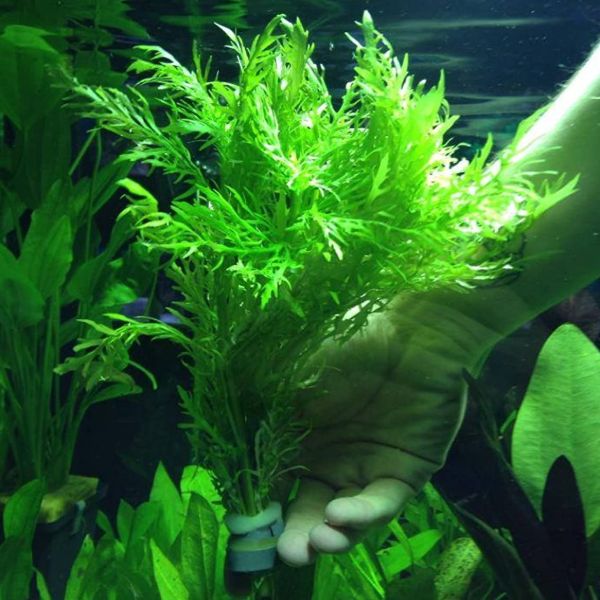
Without adequate lighting, it will be noticeably smaller. The PH of the water should be maintained at 6.5-7.5 and the temperature around 75-82F.
Amazon Sword (Echinodorus)
Its long sword-like leaves make this plant a perfect choice as background aquarium plant. It doesn’t require expert care either.
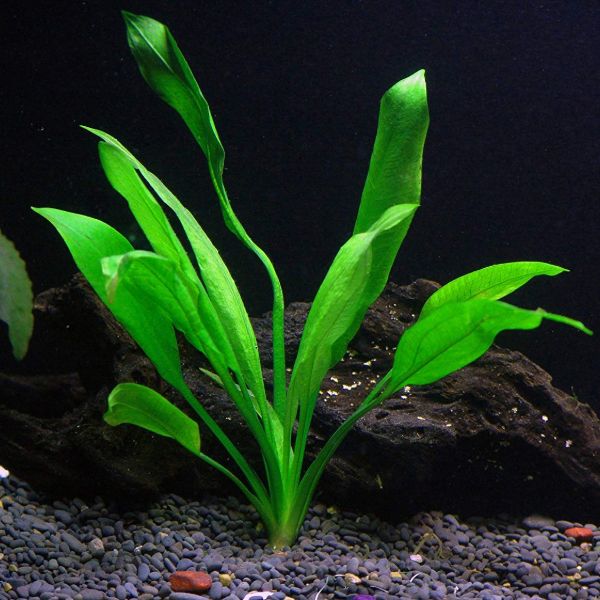
All that it needs to thrive is slightly acidic water and a temperature between 72-82F. The level of lighting it receives should be moderate.
Ludwigia Repens
Much appreciated among aquarists for its beautiful reddish leaves, Ludwigia Repens can grow up to 20 inches tall so it is best suited for middle to large fish tanks. It propagates fast so don’t bother to buy more than a few stems.
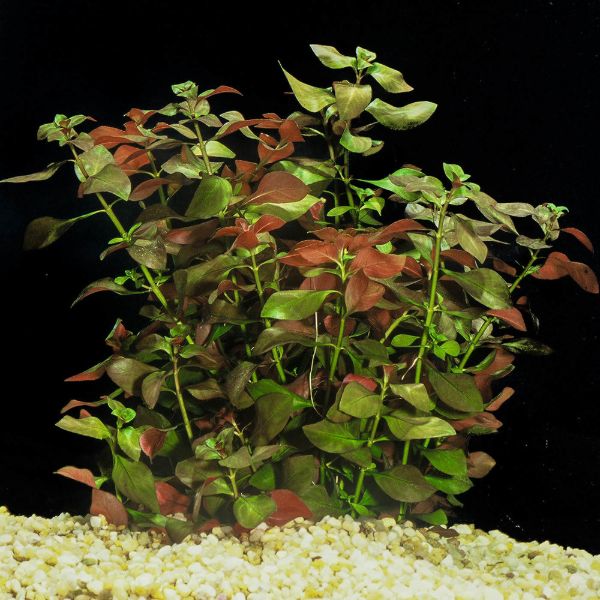
Tip: Plant it as young as possible to give it more time to adapt to the conditions in your tank. If you want its leaves to be an intense red make sure it gets plenty of lighting, at least 2.5 watts per gallon.
Saltwater or Freshwater Aquarium Plants: Which Do You Need?
Most people start out with freshwater aquariums as they are easier to take care of, but saltwater tanks allow you to grow some splendid varieties of fish. Just as fish prefer one type of water, so do the plants.
Freshwater Aquarium Plants
There is a wide variety of aquarium plants you can use in a freshwater tank, not only for decorative purposes but also to keep the fish healthy as these plants provide a natural filtration system for the water.
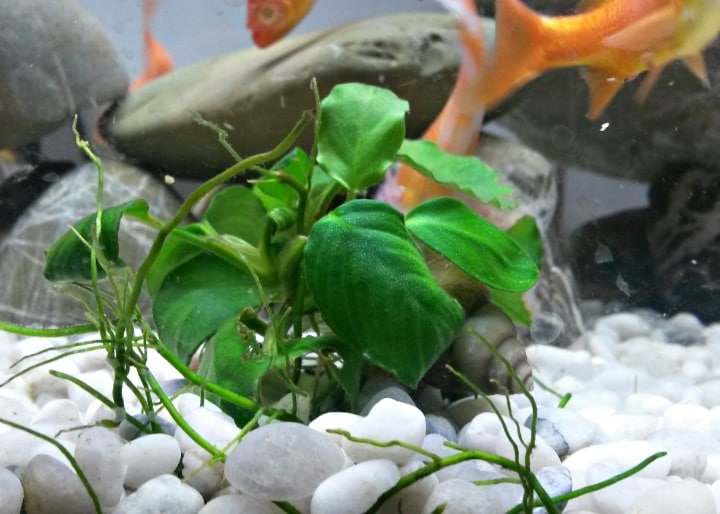
Some of the most popular freshwater aquarium plants are Java moss, Amazon sword, Java fern, Anubias and Anubias Nana, Cryptocorynes, Pygmy Chain Sword, or Hornwort.
Saltwater Aquarium Plants
Saltwater fish are more exotic and colorful and so are the plants that thrive in this type of water.
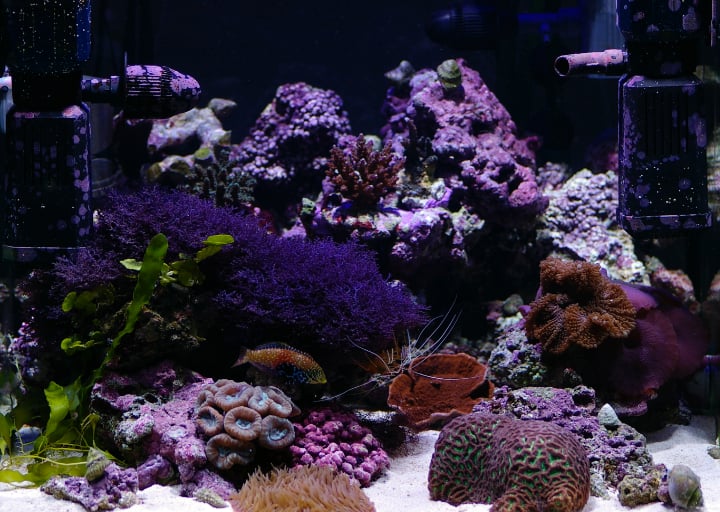
If you’re planning on setting up a saltwater fish tank, here are a few of the plants you should consider: Red Mangrove Propagule, Dragon’s Tongue Algae, Green Finger Algae, Turtle Grass Shoots, and Mermaid’s Fan.
Top Live Aquarium Plants Ideas
What we’ve been covering so far are just the basics, what to put in the foreground and in the back. Now let’s explore some aquascaping ideas.
We hope the following ideas will inspire you to create a work of art in your fish tank, whether big or small.
Check out our aquarium plants list with pictures for inspiration.
1. Floating Aquarium Plants
Using floating aquarium plants for your fish tank is a great way of purifying the water. Floating plants grow quickly and reduce damaging waste, such as nitrates, which they use as nutrients.
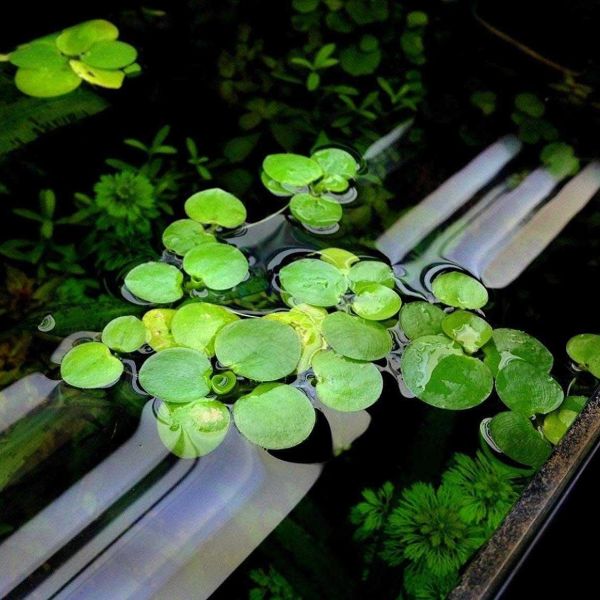
Some of the most common floating aquarium plants are duckweed, Amazon frogbit, water lettuce, Water Spangles, Normal Salvinia, Hornwort, and Riccia Fluitans. They’re low-maintenance and quite suitable even for beginners.
2. Aquarium Plants in Sand
Sand is a good substrate when keeping bottom-dwelling fish. Like in the image below, it can create at the same time a beautiful contrast with the surrounding plants and other elements in the aquarium.
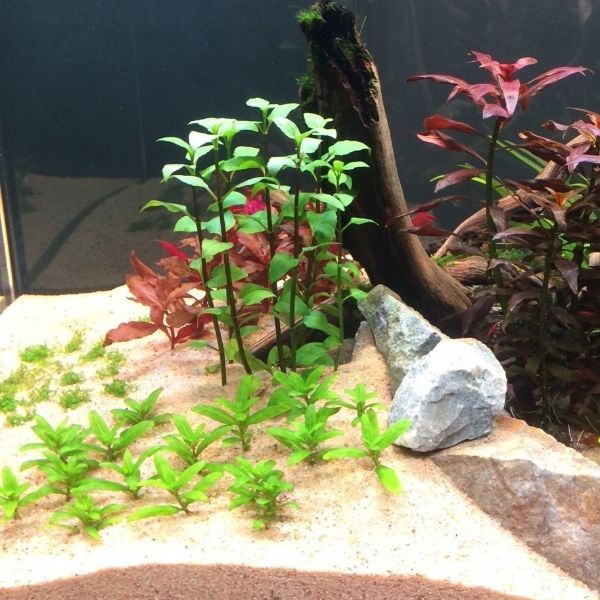
There are a few types of aquarium plants you can grow in sand, such as Amazon swords, Vallisneria, Cryptocoryne, Dwarf hygro, Anacharis Elodea (water weeds), Cabomba, or Tiger lotus.
3. Aquarium Plants in Gravel
The problem with gravel is that it’s shifty and your plants need to be firmly rooted. However, it’s possible to use a gravel substrate in your tank. It should be between 3 and 8 mm in size.
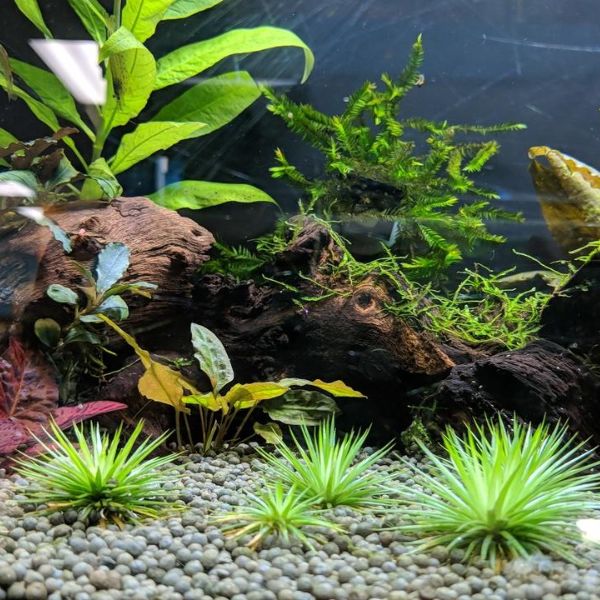
Anything larger or smaller than that can damage the roots. Here are a few plants that do well on a gravel substrate: Anubias, Amazon sword, jungle Vallisneria, and Ludwigia repens. You will probably need fertilizers, too.
4. Cold Water Aquarium Plants
If your aquarium does not have a heater, you can decorate it with plants that can grow well in colder water. Two of the most popular aquarium plants cultivated in cold water are hornwort and frogbit.
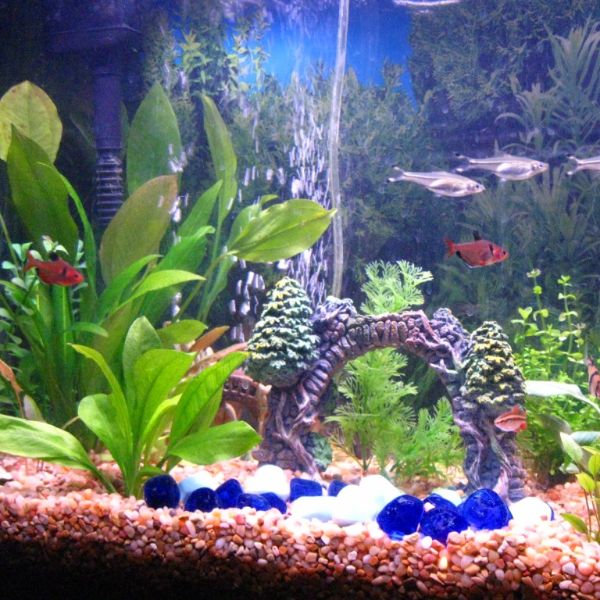
Dwarf aquarium lilies and tiger lotuses are also popular options for cold fish tanks, and they are quite beautiful, too.
5. Aquarium Fern Plants
The key element in having plants thrive in an aquarium is to simulate their natural environment as best as possible.
Ferns are usually very sturdy plants so you don’t need a fancy tank to grow them and they’re low maintenance too.
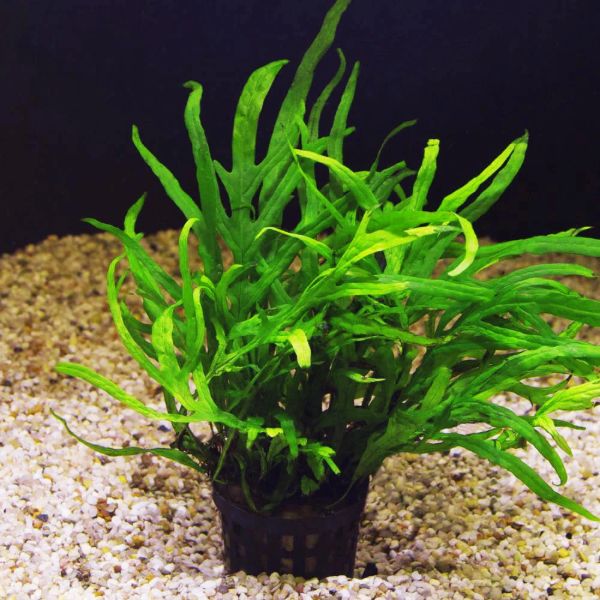
Ferns are not fussy about the substrate and can adapt to any type of lighting, except for strong lighting—moderate is ideal. They tend to grow pretty big so they are not suitable for tanks smaller than 10 gallons.
6. Aquarium Plants on Driftwood
Driftwood looks great in an aquarium as it creates a natural feel, just make sure you don’t use any random piece of wood you might find outside.
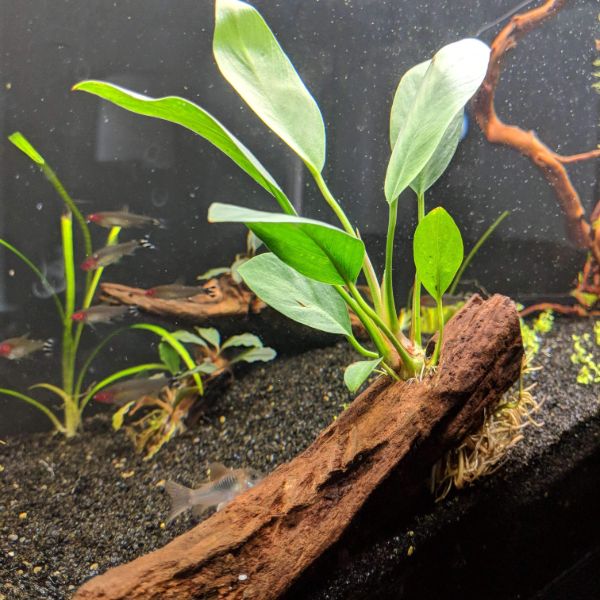
When you buy driftwood from the store, make sure it is safe for fish and doesn’t contain toxic compounds.
Among the aquarium plants that grow on driftwood are Anubias, Java fern, Java moss, Dwarf baby tears, African water fern, Riccia fluitans, or Christmas moss.
7. Aquarium Wood Plants
The biggest issue with using wood pieces in your aquarium is that not all of them are suitable for the environment. Some rot easily while others leach out natural substances that are not good for fish.
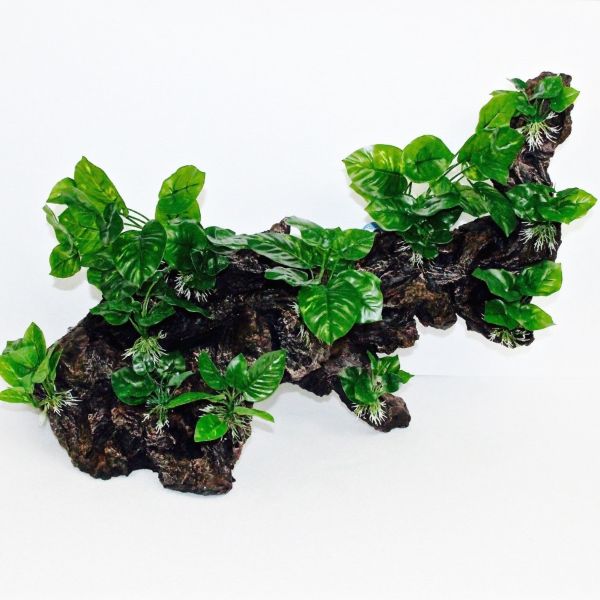
If you want to decorate your tank with wood try shop-bought bogwood like Mopani, Manzanita, and Red Moor.
As for the plants you can grow on wood—any of the Anubias family, ferns, moss, and Dwarf baby tears are the most common.
8. Aquarium Plants in Vitro
The term in-vitro aquarium plants refers to plants cultivated on a nutrient medium under sterile, laboratory conditions and shipped as such to the customer.
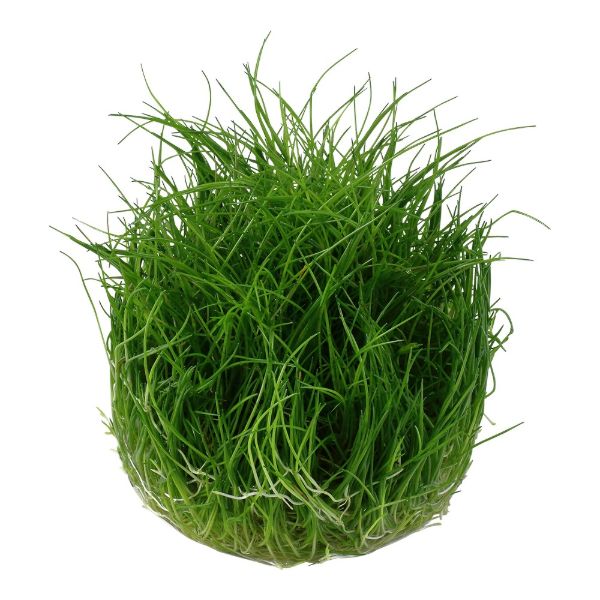
These plants stand out due to their dwarfish size, with very small stems and leaves.
The advantage of buying plants grown in-vitro is that they are free of pesticides, pests, algae spores, and germs.
9. Vallisneria Aquarium Plants
For a beginner aquarist, all plants in the Vallisneria family are a dream come true. These plants are very low-maintenance and propagate easily, so your tank will be all green and lively in no time.
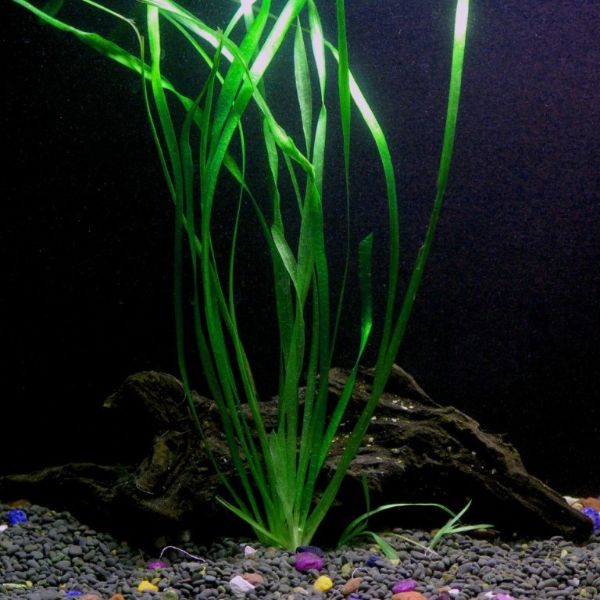
You can see in this image how graceful and vibrant they can be, so we say add some to your aquarium.
10. Aquarium Red Plants
Red goes simply splendid with the green in your tank, as you can see in this image. It creates a focal point and draws immediate attention to it.
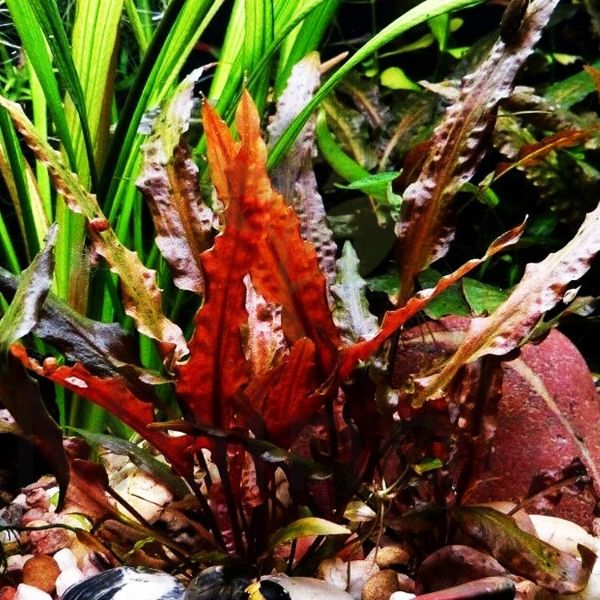
Here are a few of the most popular red aquarium plants— Ammania Senegalensis , Alternanthera Reineckii, Cryptocoryne Albida Brown, Echinodorus Red Devil, Echinodorus Ozelot, and Ludwigia Repens Rubin.
11. Purple Aquarium Plants
Purple adds a touch of class to an aquarium. You don’t want it all green, do you? Purple aquarium plants can liven up any fish tank.
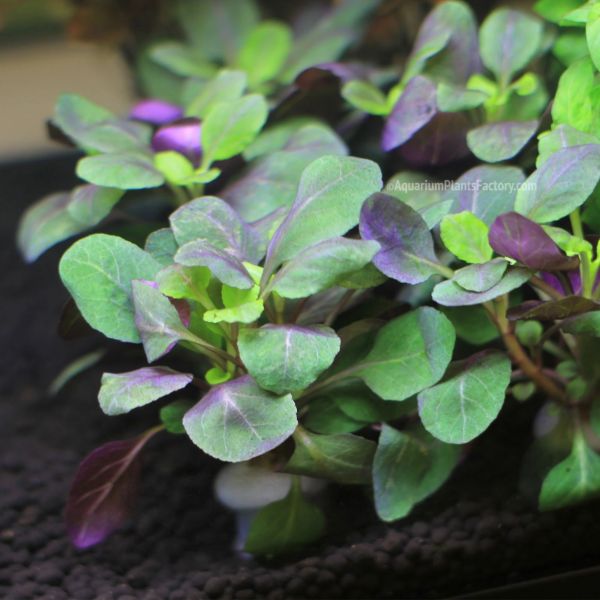
Plants you could use include lobelia cardinalis, deep purple sword echinodorus, or Staurogyne purple.
12. Carpeting Aquarium Plants
Carpeting aquarium plants create a nice looking green bottom layer, with plants that do not grow very tall, maybe just a couple of inches.
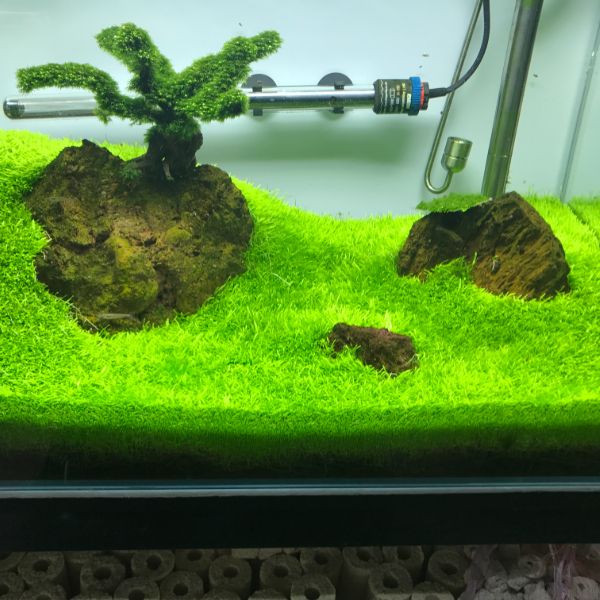
You can buy it as such, as a full carpet, or grow it yourself. It’s quite easy to grow as it propagates quickly. Any type of moss will do or you can use the ever-popular Dwarf baby tears.
13. Low Light Aquarium Plants
All plants need light to grow, but some aquarium plants only need very little of it. The most popular low light plant is Anubias, but Java fern and Java moss can also grow well without too strong lighting.
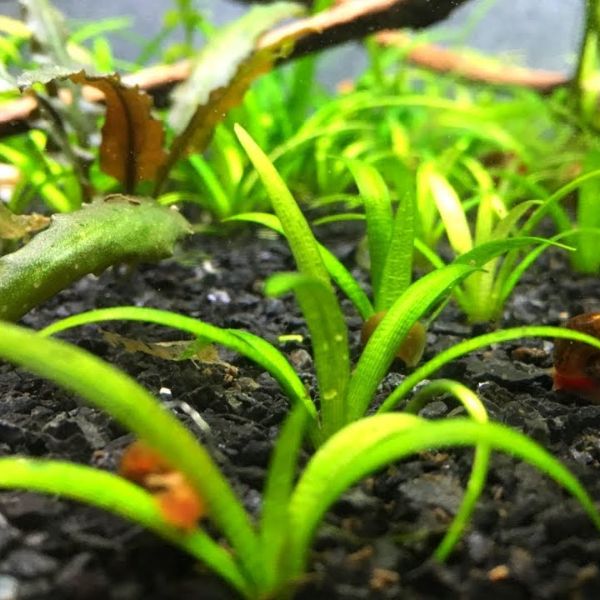
If these seem to common to you, try Dwarf Rotala which has a pleasant red color.
14. Easy Aquarium Plants to Grow
If you’re a beginner, you should start easy with plants that do not require special conditions and too much care.
People say Marimo Moss Ball is the easiest plant to grow in an aquarium, although it’s not technically a plant but a ball of algae.
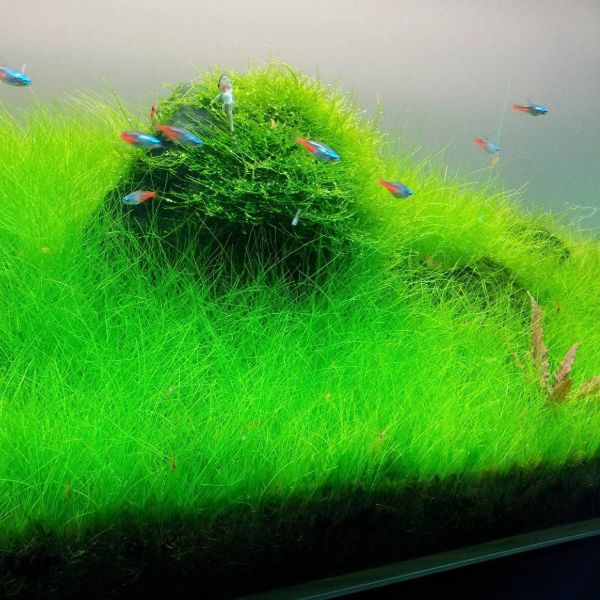
Other plants recommended for beginners are Amazon Swords, Cryptocoryne wendtii, Aponogeton crispus, Bacopa caroliniana, Christmas Moss, and Vallisneria.
15. Beginner Aquarium Plants
Don’t worry if you don’t know much about pH, lighting, or water temperature—you’ll learn. Before you do that, start with low-maintenance aquarium plants that can adapt to various conditions and thrive.
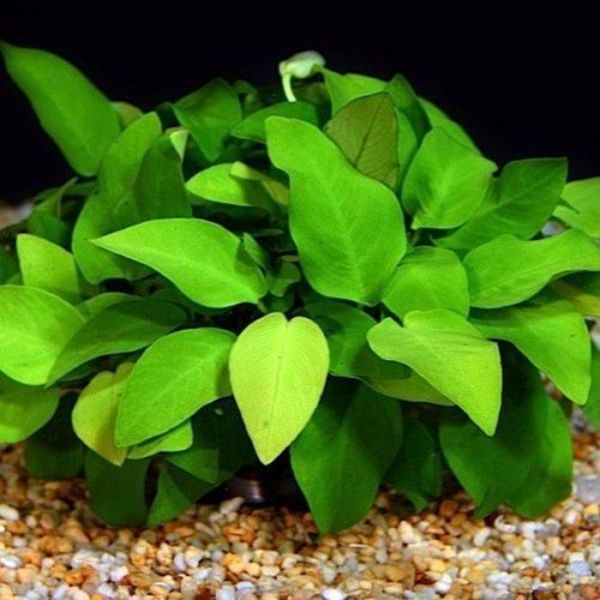
Tip: You can start with Java fern, Anubias, or wisteria. When you’ve mastered those, you can move on to more demanding plants.
16. Fast Growing Aquarium Plants
Gardening requires patience, but there are a few aquarium plants that grow super fast. If you’re new to this, it’s obvious you’re anxious to see some green in your tank.
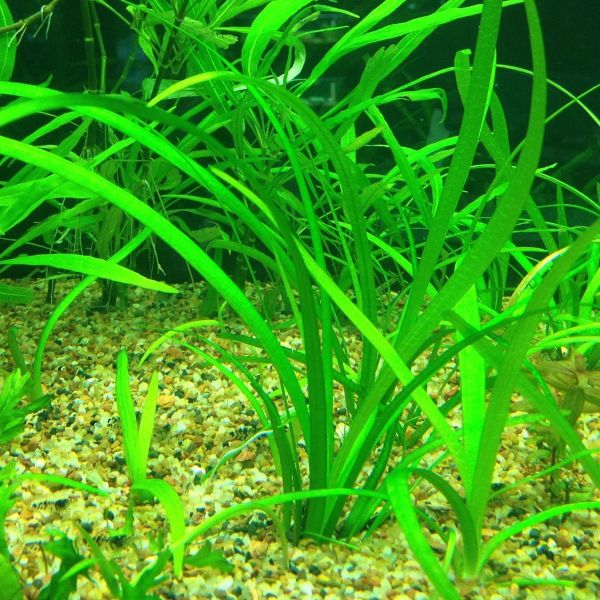
Here are a few plants that have a high growth rate-Amazon Swords, Sagittaria Subulata, Hornwort, Amazon Frogbit, Java Moss, Water Wisteria, Marsilea Hirsuta, and Lilaeopsis.
17. Aquarium Plants in Pots
These look simply fantastic in a tank! You can grow aquarium plants in various types of pots and this depends mostly on how you manage to fix them to the tank’s walls.
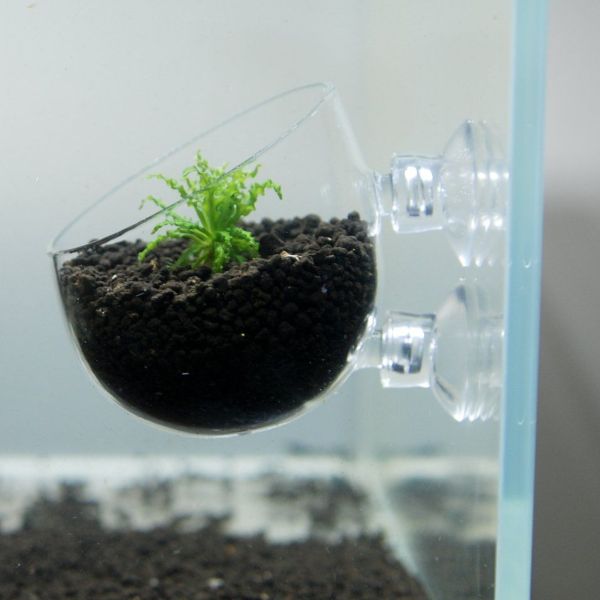
Glass pots are the most elegant, but you can use fabric pots as well. These are great as they allow the soil to soak up water but keep it inside so it doesn’t make the water cloudy.
18. Aquarium Plants That Flower
If you want to make your tank look like a real garden try flowering aquarium plants.
Some of them flower underwater, like Anubias, Amazon Sword, and Bucephalandra. Of course, you can also grow some plants that flower above water, like lotuses.
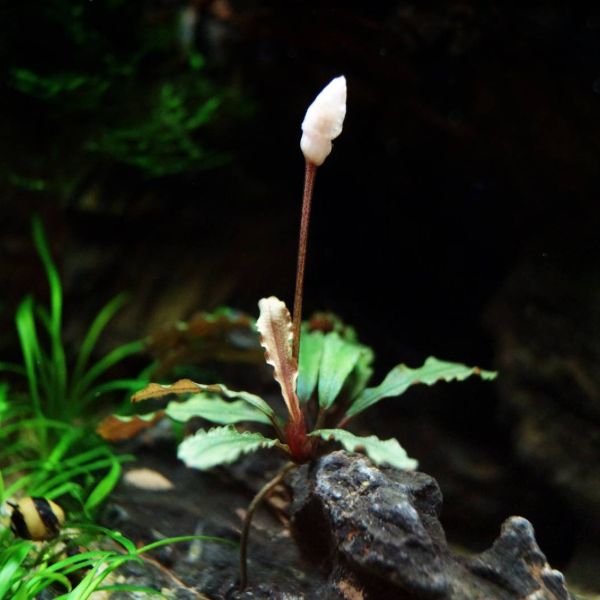
Fact: You cannot have real lotuses in a tank, but you can try Giant Hygro, Green Cabomba and the delicate lace plant,
19. Bulb Aquarium Plants
You can cultivate various types of bulb aquarium plants in your tank. Some of the most popular varieties are Aponogeton boivinianus, Aponogeton capuroni, and Aponogeton henkelianus.
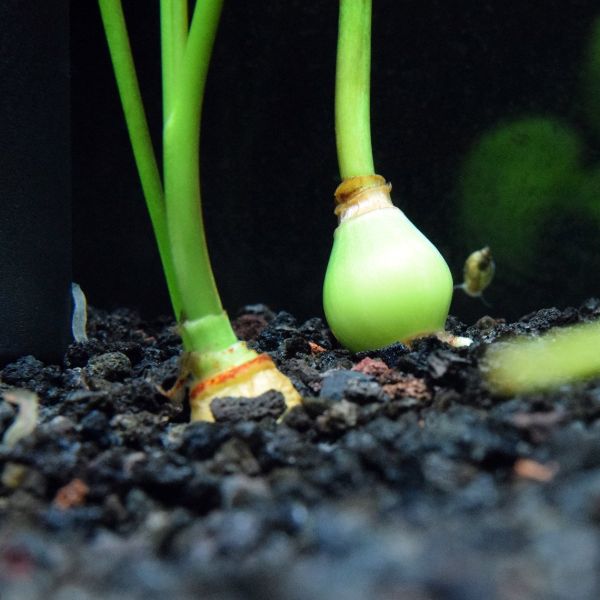
Good to know: All these plants prefer a slightly acidic to neutral pH water.
20. Aquarium Stem Plants
Stem plants go very well on the sides of the aquarium as well as in the background. Don’t put them too close to one another or their delicate beauty will be lost.
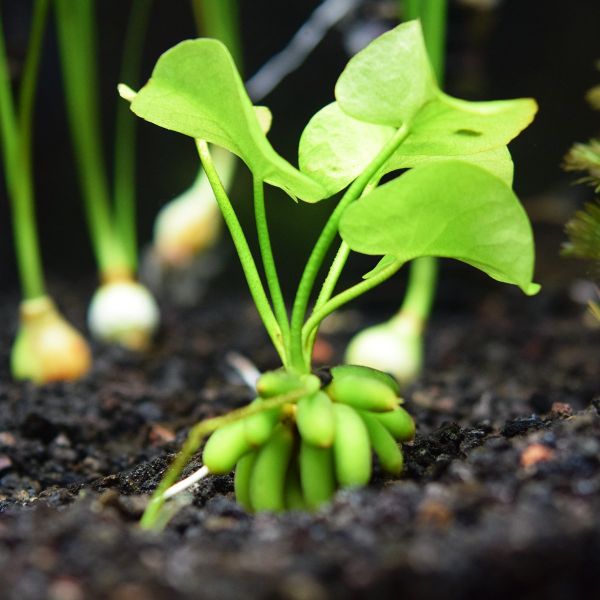
Some of the most popular aquarium stem plants are Hygrophila, which has nice leafy stems, and Water Wisteria, which is a sturdy and highly-adaptable plant.
Or you can try Hornwort, Scarlet hygro, Ammannia gracilis, Cabomba aquatica, or Bacopa caroliniana.
21. Aquarium Tissue Culture Plants
These are a type of in-vitro aquarium plants, cultivated in a sterile environment to guarantee that they are free of pests, algae, and pesticides.
This is not only about the plant itself, but about the fish as well, which might be harmed by toxic chemicals in the tank.
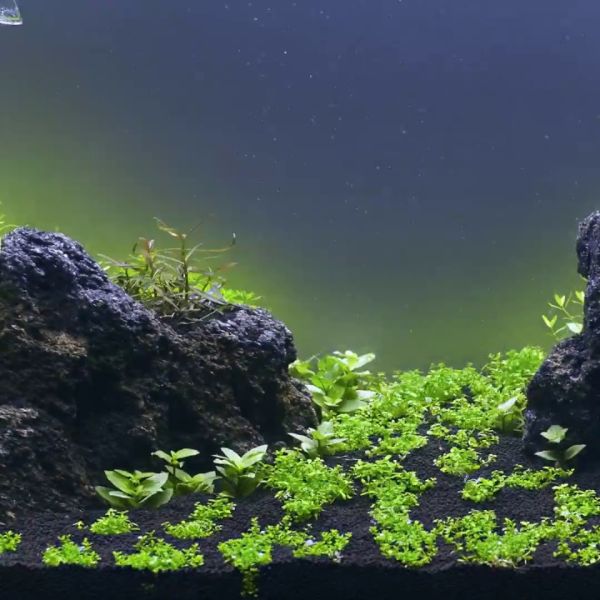
Tip: Look for plants grown in a tissue culture which are very easy to plant in the tank.
22. Tropical Aquarium Plants
All tanks, tropical or not, need carpeting first. If you want a sturdy fuss-free plant try Vallisneria.
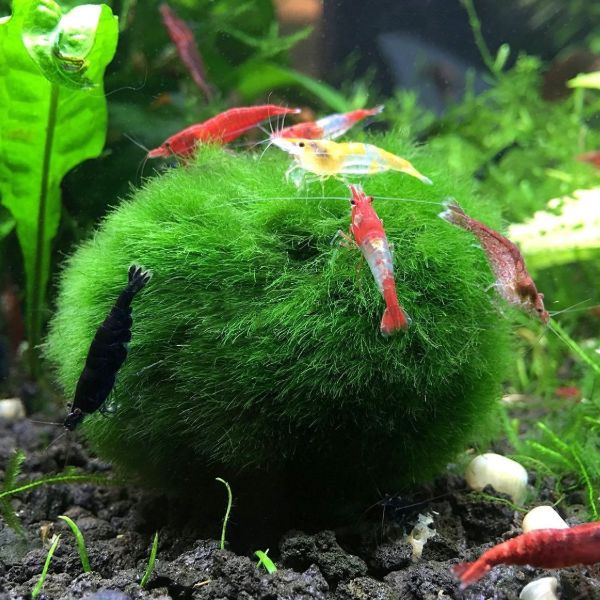
When you’ve got that covered, you can plant some tropical plants in the middle ground, like Myriophyllum, Ludwigia, and Acorus.
23. No CO2 Aquarium Plants
Many aquarium plants do not require carbon dioxide to thrive. First among these is Java Fern, highly recommended for beginners.
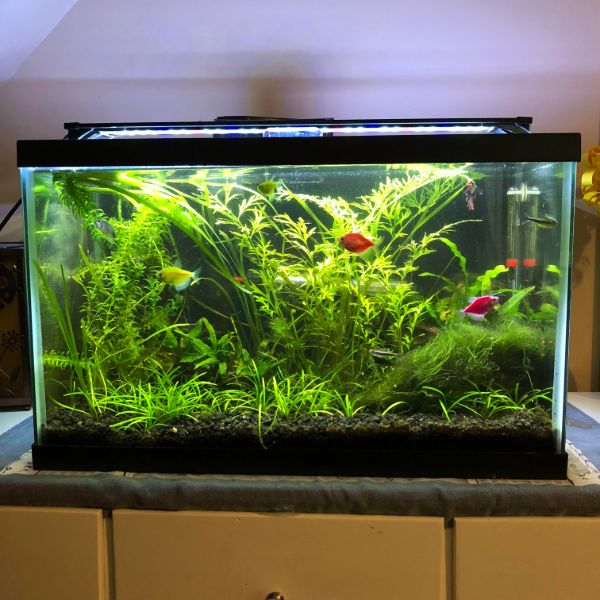
You can also plant some Vallisneria, Anubias, and let’s not forget Java Moss, the elegant Ludwigia Repens, or the water lettuce.
24. Tall Aquarium Plants
If you have a large tank you will probably want some tall aquarium plants and not only for the background. The best of their kind are Amazon swords and Sagittaria Subulata, which grow up to 20 inches in height.
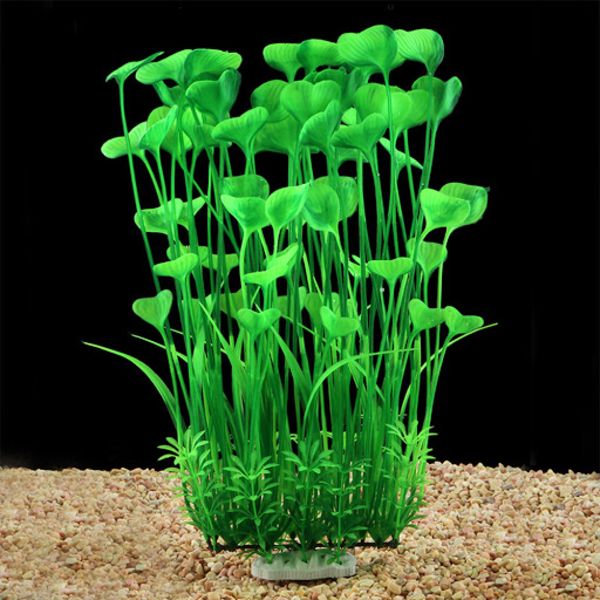
Other good choices are Amazon Frogbit, Marsilea Hirsuta, Water Wisteria, and Hornwort.
25. Nano Aquarium Plants
If you have a small tank or if you want to give your fish more space, you should choose more delicate plants that do not grow much in height, or in width for that matter.
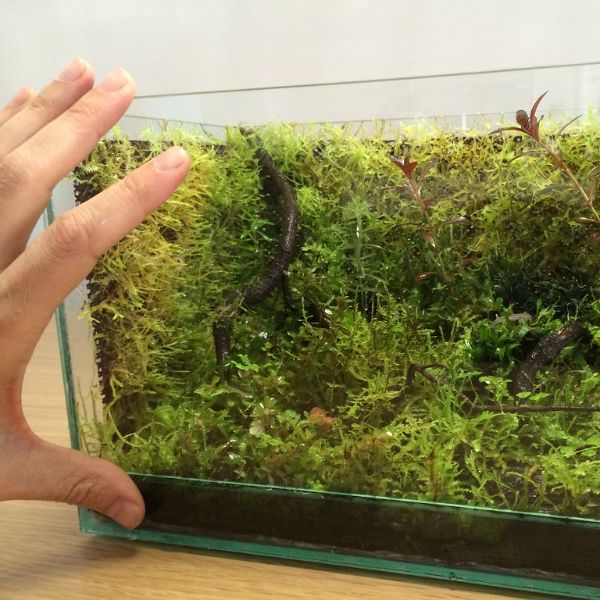
The most popular nano aquarium plants are Anubias nana petite, Cryptocoryne parva, Marimo Moss Balls, Monte Carlo, Red Tiger Lotus, and Java Fern Windelov.
26. Low Maintenance Aquarium Plants
Low-maintenance aquarium plants require little care as far as the water temperature, the pH, and the lighting are concerned.
This does not mean that they will thrive under any circumstances, but for instance, can tolerate temperature variations between 60 and 80F.
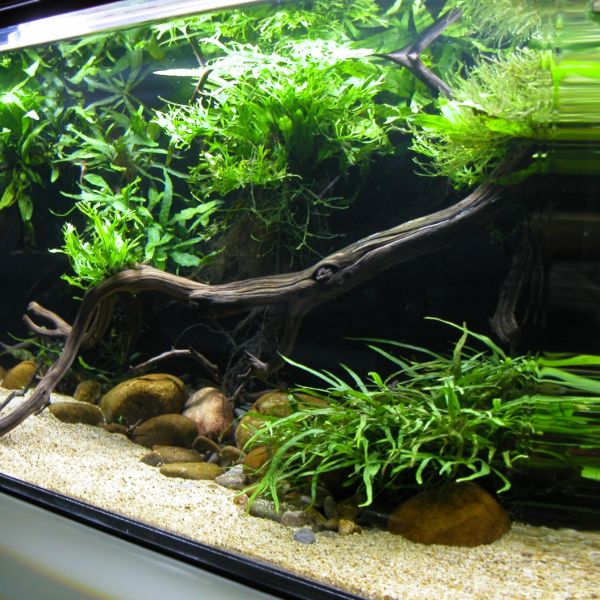
Tip: The easiest to grow are Java Moss, Green Hygro, Sunset Hygro, or Rotala Rotundifolia.
27. Goldfish Aquarium Plants
Indeed, most people are drawn into this hobby by their first goldfish. And there are quite a few plants that you can grow in a goldfish tank.
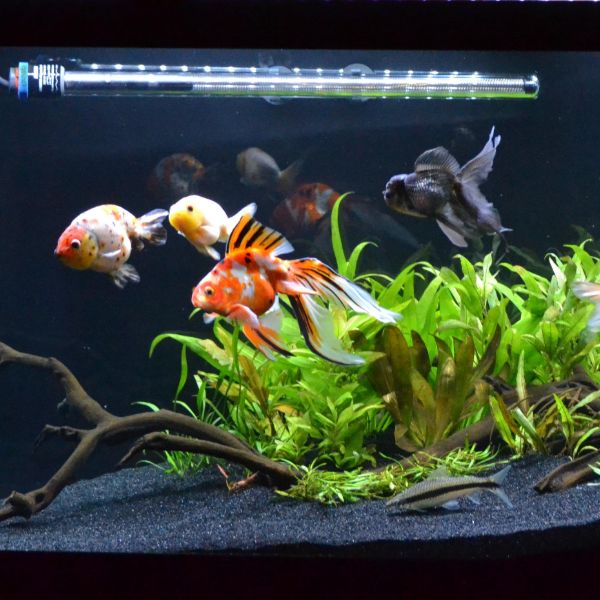
The most popular are Java Fern, Anubias, Onion plant, pothos, water sprite, and crypts.
Tip: Get the plants first, you can get the fish after!
28. Hardy Aquarium Plants
If you want some fuss-free plants for your tank, try some sturdy aquarium plants which can adjust to variable conditions.
Try Water Wisteria, African Water Fern, Amazon Sword, Java Fern, Cryptocoryne Beckettii, Dwarf Aquarium Lily, and Anubias.
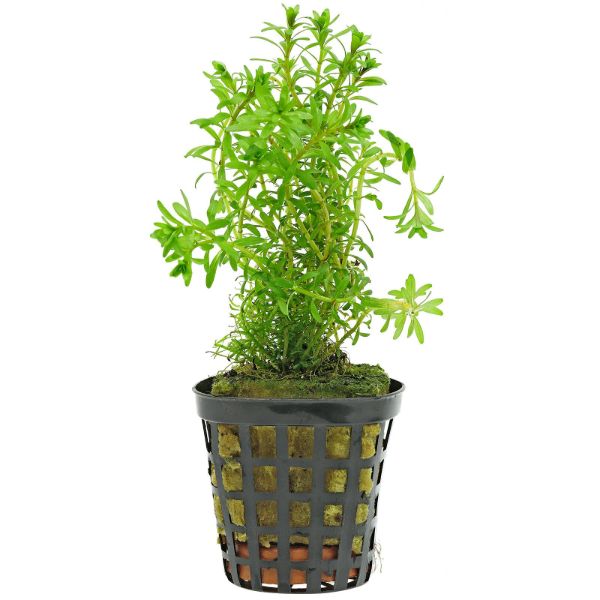
Tip: Keep in mind that they will not grow to their full potential if the conditions are not optimal. For instance, Water Wisteria varies in size depending on how much lighting it gets.
29. Aquarium Plants for Shrimp
If you have a shrimp tank you need to make sure the plants you grow in it are suited for the specific conditions shrimp need.
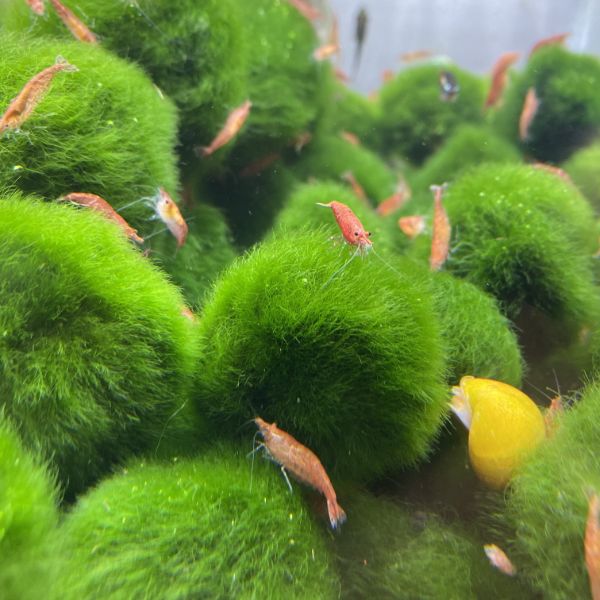
The top aquarium plants for shrimp tanks are Java moss, Anubias, Java Fern, Bucephalandra, Water lettuce, and Rotala rotundifolia, also known as the dwarf rotala.
30. Aquarium Plants Cabomba
Cabomba plants are among the most popular plants among aquarists. They are readily available in many stores, where they are sold under names such as Green Cabomba, Carolina Fanwort, Brazilian Fanwort, or simply Fanwort.
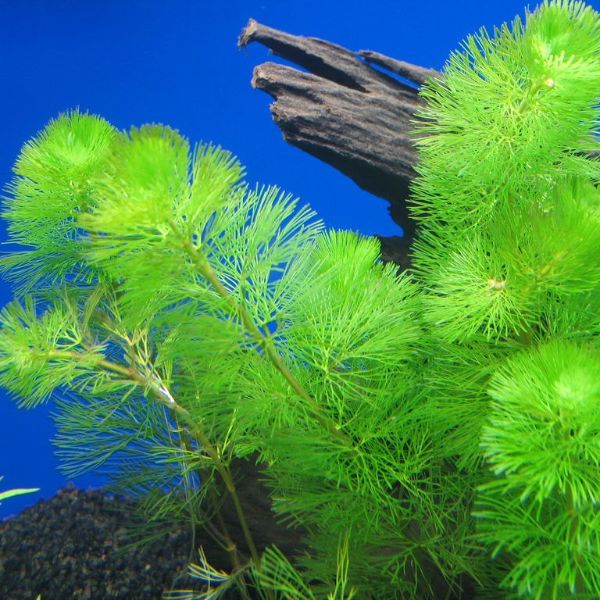
They are best as background aquarium plants. Be aware that some of the Cabomba plants are very high-maintenance!
31. Potted Aquarium Plants
This refers to all aquarium plants that are not cultivated in substrates, but in various types of pots. Well, not exactly the pots you have on the window sill, but rather in glass or fabric pots.
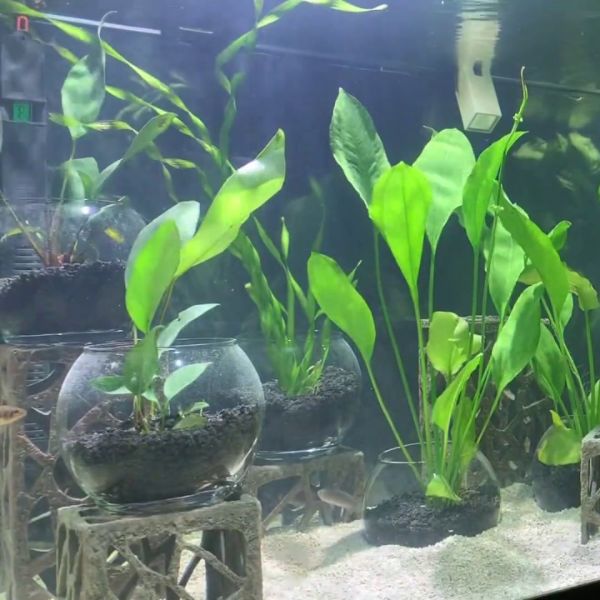
Not to be confused with the pots most aquarium plants are sold at the fish store, as you have to remove the plants from those types of pots before planting.
32. Aquarium Moss Plants
If you want to create a beautiful scenery in your tank you should start with wall-to-wall carpeting using aquarium moss plants. These are very easy to grow and propagate quickly to cover the bottom of the tank.
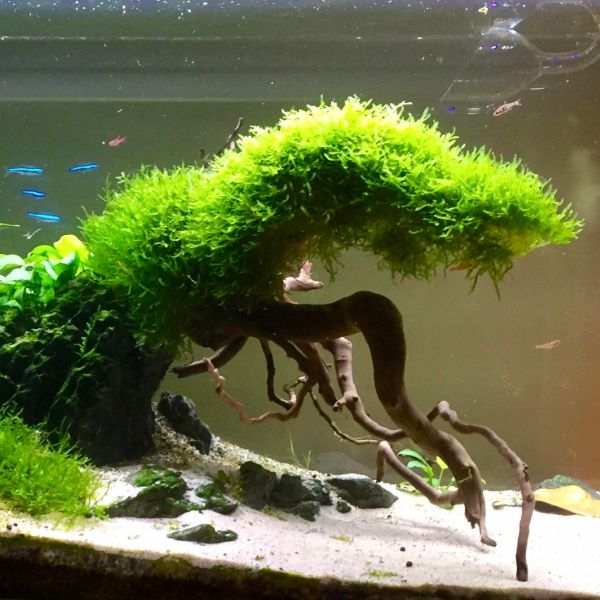
The most common types are Java Moss and Christmas Moss, but you should also try Willow Moss, Weeping Moss, Flame Moss, Star Moss, or Peacock Moss.
33. Java Fern Aquarium Plants
You can find Java Fern in many tanks as it is one of the most popular aquarium plants, mostly because it is very easy to grow.
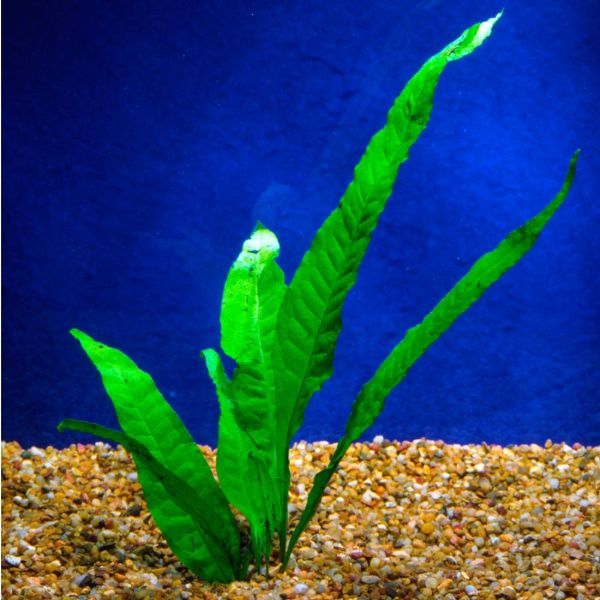
Java fern plants grow around 8 inches in height and can thrive even with low lighting. It does tend to grow rather slow, though.
34. Aquarium Plants Baby Tears
Dwarf Baby Tears are a star among aquarium plants as they grow extremely fast, covering the tank floor with their tiny green leaves.
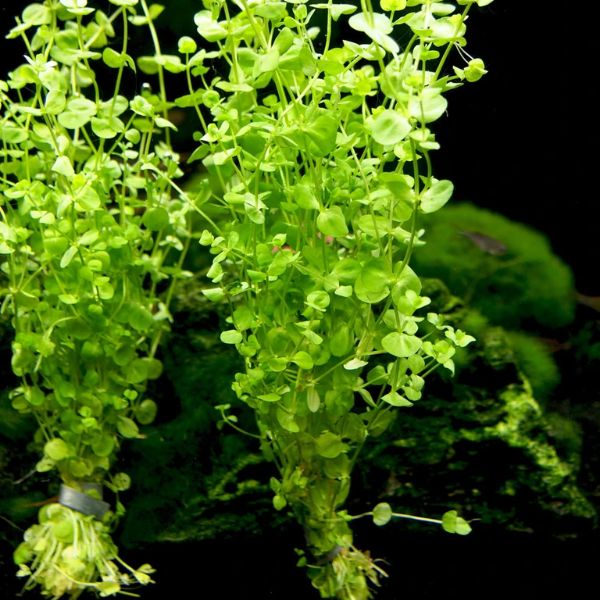
Tip: You can also buy DBT as an instant carpet, already grown on special mats. All you have to do is roll the green carpet on the floor!
35. Aquarium Algae
Not all algae are bad for your tank, but when they proliferate in your aquarium it’s a sign of an imbalance in the environment.
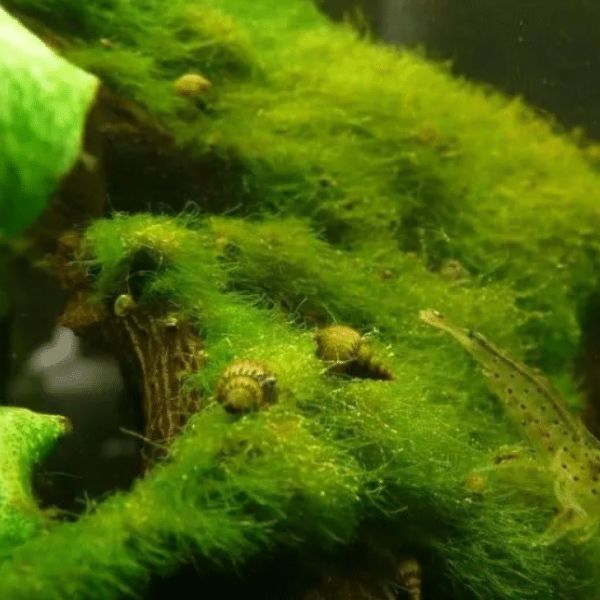
There are special products to get rid of algae, but you should dig deeper and find the cause. Correct the imbalance in the ecosystem before it starts affecting the fish.
36. Aquarium Grass
You can use aquarium grasses to create a lawn for your fish. It looks splendid, like a miniature meadow.
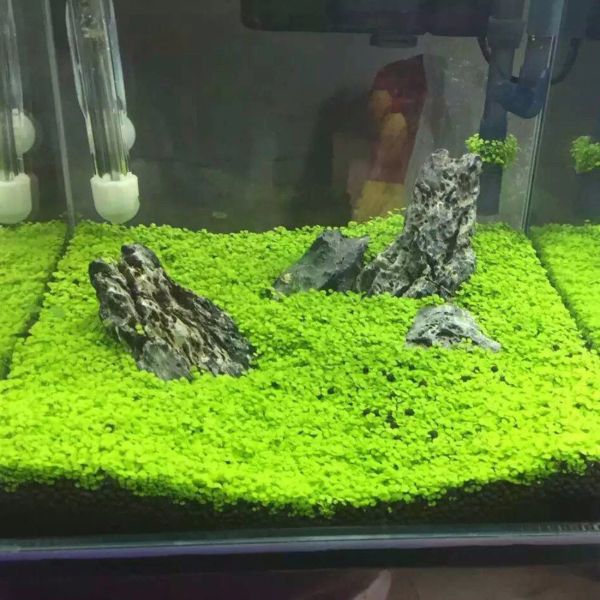
Besides the above-mentioned carpeting aquarium plants, you can also use Dwarf Hairgrass, Leaf Sword, or Tropica Marsilea Crenata.
37. Low Tech Aquarium Plants
If you want some plants that do not require special care or complex lighting systems, try the many varieties in the Cryptocoryne family, which are very tough once they take roots in the tank.
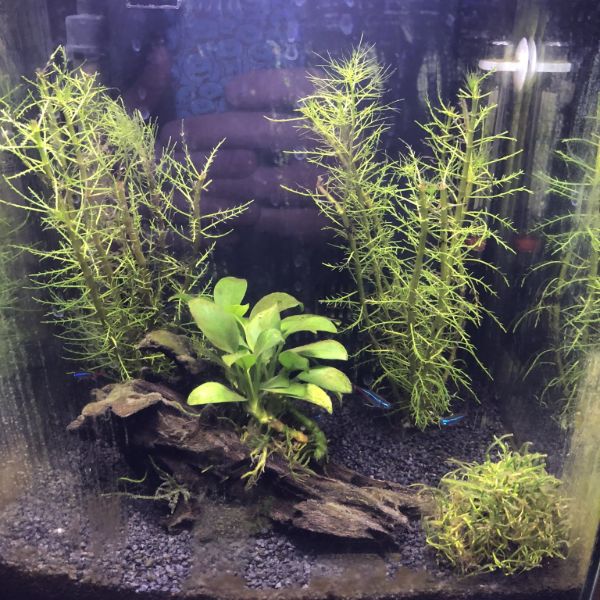
Another excellent choice is Anubias barteri ‘nana, which doesn’t even need soil to grow as in many cases it comes attached to driftwood.
How to Grow Aquarium Plants and Care for Them
The secret to having an amazing fish tank full of thriving vegetation is to choose the aquarium plants that are right for you and know how to care for them.
This includes picking the right soil and fertilizer, making smart use of lighting, and making sure the quality of the water is adequate.
Remember that each plant has its own needs and select a combination of aquarium plants that thrive in similar conditions.
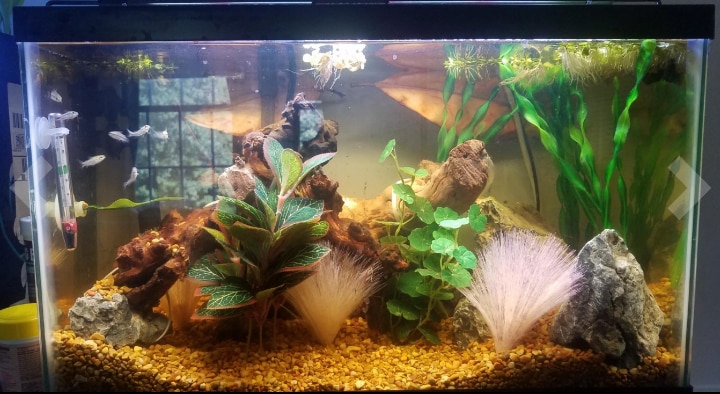
The most important thing to keep in mind is that fish as well as plants need high-quality water, which means getting some fresh water on a regular basis.
Rain water is good for your garden, but not for your aquarium plants!
Tip: As a rule, you should change 10-15% of the water in the tank every week. Two weeks at most, if your aquarium plants allow it.
Inspect the water filter to make sure it’s not clogged and clean it according to the instructions.
Aquarium Lighting for Plants
Like any other plants, aquarium plants use light as their main source of energy. Natural light is essential for the photosynthesis process through which plants convert carbon dioxide into energy.
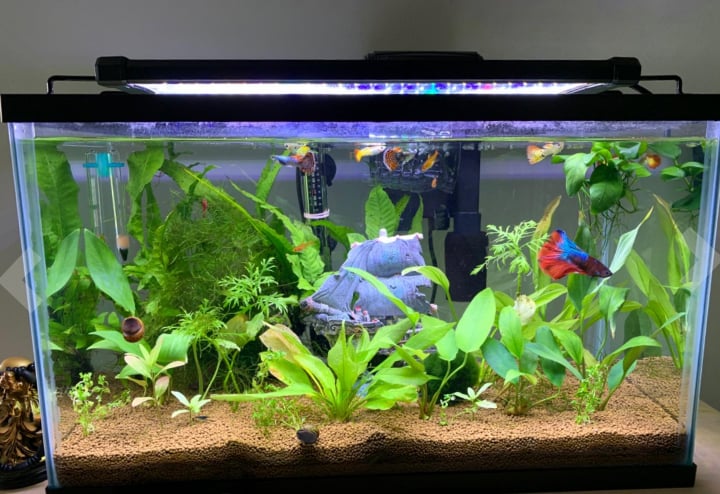
You must be very careful where you place your fish tank as too much direct sunlight encourages algae proliferation.
For aquarium plants to thrive they need about 8 hours of exposure to full-spectrum light per day. Full-spectrum light mimics natural light and you can achieve this goal by using LED lighting specially designed for fish tanks.
LED lighting is the best choice for your aquarium as it doesn’t not give out heat so you won’t have to worry about overheating, which is bad for both fish and plants.
Also, LED lighting is cheaper than other fixtures, like VHO (very high output) bulbs or metal halide lamps.
Here are some top sellers to consider.
Aquarium Substrate for Plants
Aquarium plants cannot live only on water and light. They will need nutrients, which they absorb through the roots like any other plants. The layer at the bottom of your tank is called a substrate.
If you’re thinking about an aquarium with the bottom covered in a simple layer of sand or gravel, this won’t do for a planted aquarium.
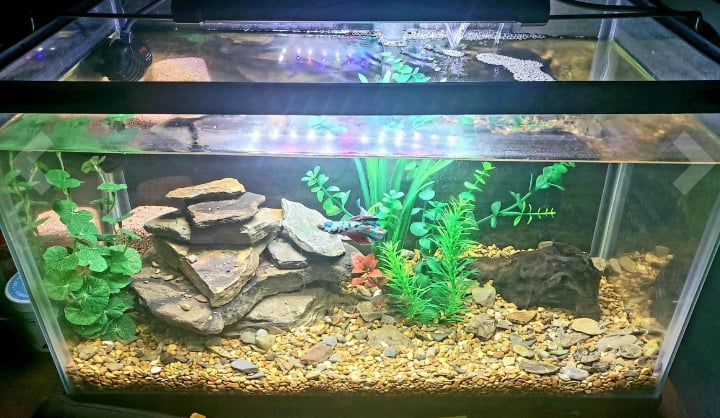
Sand and gravel look beautiful, it might give fish the illusion they’re swimming in a river, but it just won’t be enough for your plants.
At the very least, you will need plenty of fertilizer to make sure the plants get enough nutrients.
Aquarium Soil for Plants
There are many types of soils to choose from for your aquarium, but this does not include your regular garden-variety soil.
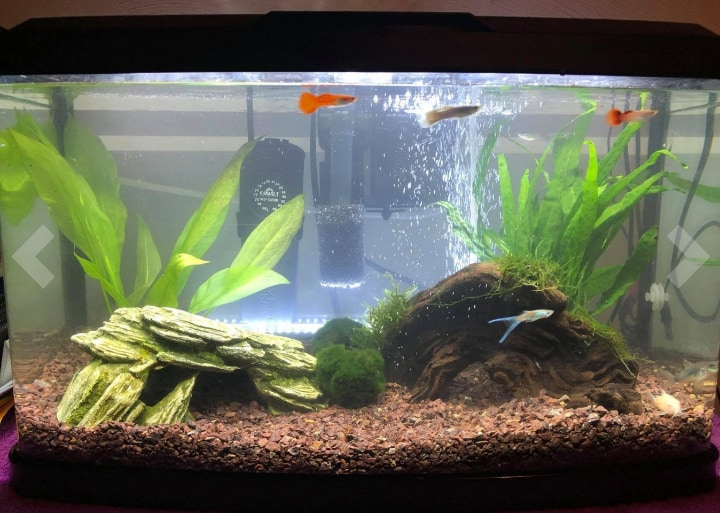
Important: You cannot use a layer of soil from the garden as you cannot be sure it’s 100% organic and it might contain substances that are dangerous to your fish. Also, regular soil will make the water cloudy.
You will need to use a special aquarium soil you can find at fish stores or order online. Check out each available type to see which is best suited for the aquarium plants you have chosen.
Here are some options you may want to check out:
Aquarium Plants Fertilizer
Aquarium plants need a complex mixture of macronutrients, such as nitrogen, phosphorous, and potassium, as well as micronutrients, elements like iron, boron, and manganese, of which they only need trace amounts.
If any of these is missing from the soil in your tank, it will affect the growth of your plants and they might even die. This is why you should look for a fertilizer to add to the water every now and then.
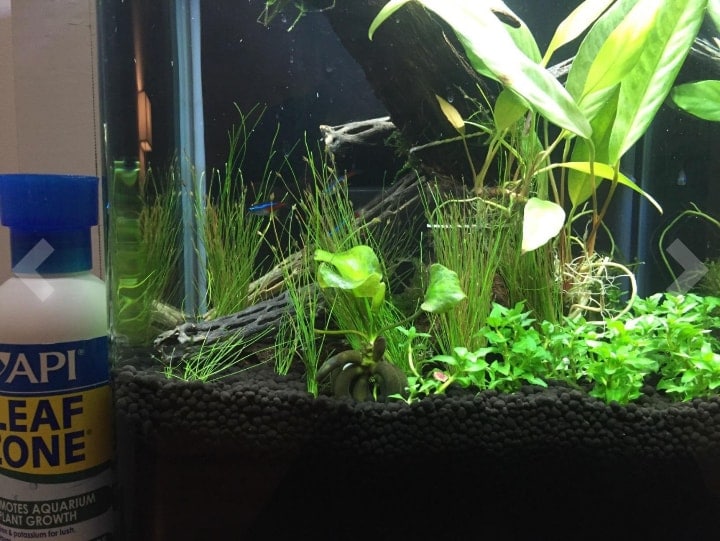
Do some research to see which type if right for your aquarium as some products have a very complex formula while others are pretty basic and only contain two or three nutrients.
Check out these top sellers:
Aquarium Plants Frequently Asked Questions Answered
Setting up your first aquarium is such an exciting experience, and it is only natural to have many questions. Here are a few of the most common things beginners wonder about.
Do aquarium plants need soil?
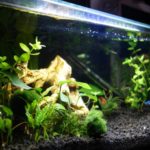
Yes, aquarium plants need soil just like any other plants, just as they need light and… water. However, they need a special type of soil, not the one to be found in a garden. In addition to soil, aquarium plants also need fertilizers.
How do you plant aquarium plants?
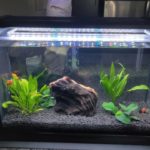
Most aquarium plants bought at a fish store come in little pots stuffed with rock wool. Squeeze the pot to push the plant out taking care not to damage the roots. Unless otherwise instructed, you need to plant each stem at least 2 to 3 inches deep into the soil, which means the substrate may cover some of the bottom leaves. Check out our guide on how to grow aquarium plants for more tips.
Can aquarium plants grow in gravel?
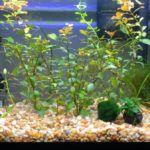
Only certain types of aquarium plants are suitable for a gravel substrate, so make sure to read the instructions carefully before buying. At the same time, the gravel size needs to be between 3-8 mm thick. If you’re using larger gravel in your tanks it might block root growth; finer gravel might damage the fragile roots.
Time to Green Up Your Aquarium?
Aquascaping is a fascinating art. It takes time and passion to see the interior of your fish tank all covered in lush vegetation, but it’s also very rewarding. Remember that aquarium plants are not there just for decoration.
If the plants in your tank thrive, they will create a healthy environment for your fish. Use your imagination to select varieties of plants that will go well together.
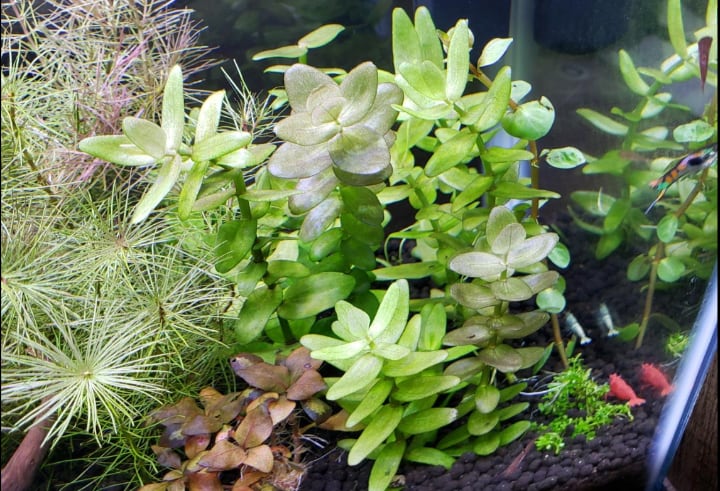
Selecting the plants will be a bit of a task as there are only so many of them you can fit in a tank. But it’s a fun sort of task, and we think you’ll enjoy it.
Which of the ideas above is your favorite? Let us know through a comment.
See you next post!
PS: If you enjoyed this post, you may also like our easy guide on terrariums and jarrarium kits.

Really loved your article. I have got so much information that will help with my aquarium hobby. I also love to share information more information on my own blog near the future!
Thank you so much and let me know if you have any questions at all!